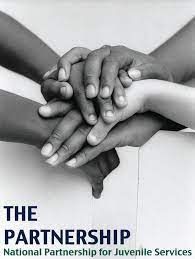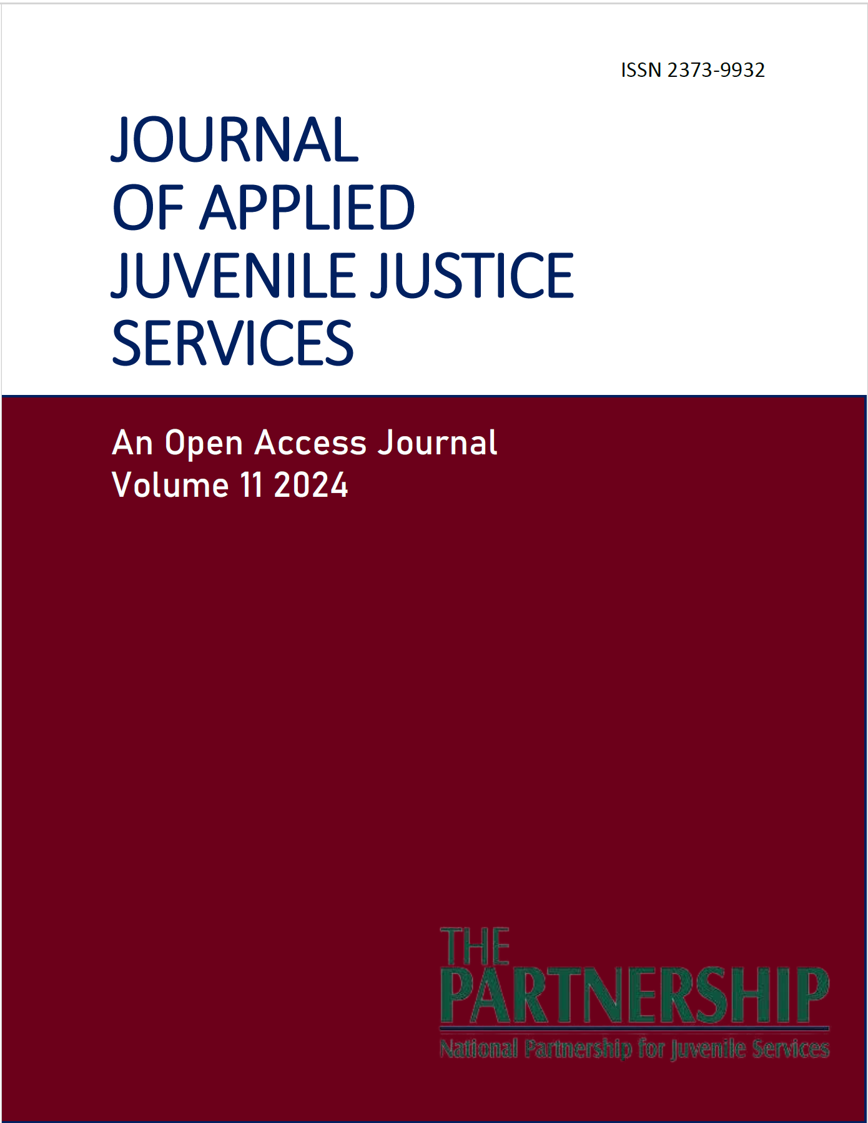Perspectives on Hypercriminalization and Its Impact on Racially Minoritized Youth: Insights from Juvenile and Human Services Practitioners
Abstract
The criminalization of racially minoritized youth is often examined in the literature on racial and ethnic disparities (RED) and the school-to-prison pipeline. Most of the research in this area focuses on the impact of formalized criminalization on the offending trajectories of racially minoritized youth, often overlooking informal experiences with criminalization and their influence on how these youth construct their self-perceptions. The current study assesses human and juvenile justice service providers’ perceptions of the impact of repeated criminalization on racially minoritized youths’ self-concept and other outcomes. The results of thematic coding showed that practitioners perceived that the ubiquitous experience of regular criminalization altered racially minoritized youths’ self-concept and contributed to other problems, including compounded criminalization, and the development of internalizing and at-risk behaviors. The results suggest that the criminalization process extends beyond juvenile justice processing and access to conventional opportunities.
Keywords
Race, Social Control, Punishment, Juvenile Justice, Youth
INTRODUCTION
Recent incidents involving the extrajudicial shooting and killing of unarmed Black youth by police officers and civilians have accentuated how Black youth are targeted for differential treatment and denied the compassion and understanding traditionally granted to White children. Marginalized young people, or racially minoritized youth, often receive less empathy from society than their White counterparts, harming their overall well-being (Goff, Thomas & Jackson, 2008). This is particularly true in health, depressive symptoms, and school adjustment (Koch & Kozhumam, 2022; Wong, Eccles & Sameroff, 2003). Additionally, racially and ethnically marginalized youth are often left alone and without support in areas where White children are typically given more warmth and empathy by society.
The same is true for racially minoritized youth who are justice-involved. Once adjudicated delinquent, racially minoritized youths’ delinquent acts seldom, if ever, are attributed to mitigating factors such as mental health, bullying, immature brain development, or poverty. The adultification and marginalization of racially minoritized youth and the related culpability they are perceived to have for their actions can lead to racially disparate outcomes in the juvenile justice system (Goff et al., 2014). Regarding juvenile courts, Abrams and colleagues (2021) found that Black youth are overrepresented at every stage of the justice process compared to White youth. This includes probation referrals and the decision to file petitions. This likely happens because the belief that racially minoritized youth's actions are solely due to their agency often leads to the view that they deserve the most extreme punishment.
Moreover, research shows that racially minoritized youth are often unfairly targeted and punished in homes, schools, and neighborhoods. Research has shown that the punitive attitude displayed in juvenile justice systems is replicated in homes for minoritized youth (Cooper et al., 2020; Elliott & Reid, 2019). For instance, Elliott and Reid (2019) found that Black mothers often use parenting strategies that resemble the punitive practices of the justice system, including excessive surveillance and discipline. This finding was partly attributed to mothers viewing the adoption of an authoritative parenting style as a means of protecting their children from the hyper-criminalization they predicted their children would encounter outside of their homes.
Similarly, other studies have found that minor-itized youth experience punitive treatment in their neighborhoods, leading to constant surveillance and policing (Solis, Portillos & Brunson, 2009; Vera Sanchez & Adams, 2011). One consequence of this has been the marked increase in the proliferation of viral video recordings of civilians interrogating racially minoritized youth in their communities. This is often done in an aggressive or hostile manner and can lead to feelings of intimidation and vulnerability for the youth involved.
To date, no study has illustrated the ubiquitous and pervasive punishment of racially marginalized young people and the processes by which punishment connects to various outcomes as much as Victor Rios's (2011) study, Punished: Policing the Lives of Black and Latino Boys. In this qualitative study, Rios found that 40 Black and Latino male youths faced presumptions of deviance and criminality in their interactions with authority figures in the juvenile justice system, schools, neighborhoods, and homes. Rios also found that Black and Latino boys confronted an invisible and punishing system of control that followed their presumed criminality. Consequently, the racially minoritized youth experienced constant punishment, which led them to further engage in delinquent behavior and to develop a strong disdain for authority.
Though Rios’s study only involved a sample of 40 youth, his work, like most qualitative research did not aim to generalize its findings to a broader population in the same way as quantitative studies. Instead, it sought to provide deep contextualized insights into the lived experiences and perspectives of the participants, As a result, Rios’s work contributed to theory-building and enhanced our understanding of systemic issues the ‘youth control complex’ by uncovering patterns and mechanisms that possibly manifest across similar contexts. As a result, Rios’s study was well received. However, few additional studies have focused on the criminal-ization of racially minoritized youth across social settings as Rios has (e.g., Beneby, Glenn & Taylor, 2020; Farinde-Wu, Butler & Allen-Handy, 2022; Maldonado, 2019).
Racially minoritized youth experience a unique form of racialized social control compared to youth of other racial backgrounds. However, we have limited knowledge about the effects of these experiences on their self-concept and other out-comes. In this study, we used the insights of human service and justice professionals to see the impact of criminalization on minoritized youths' self-concept and other outcomes. We relied on the professional testimonies of these groups specifically because they work closely with racially marginalized youth to help transform their behavior and boost their self-concept. The current study asked: How does criminalization impact minoritized youths’ self-concept?
States nationwide continue to prioritize the elimination of racial and ethnic disparities (RED) among youth involved in the justice system despite limited success in recent decades. An important next step is understanding how criminalization affects the self-concept and overall well-being of racially minoritized youth. This will help inform and update best practices for reducing RED. Furthermore, understanding these effects can help us understand and discuss initiatives for enhancing the effectiveness of programs that support racially minoritized youth. This is particularly important when considering issues of racial equality and cultural understanding.
Racial Discrimination and Self-Concept
Racism and discrimination often negatively affect young people from marginalized racial groups. Minoritized youth suffer harm from racial discrimination, which leads to their attendance at low-quality schools, limited healthcare access, strained relationships, and other structural inequalities (Njoroge, Forkpa & Bath, 2021). Systematic discrimination affects minoritized youth, but there is limited knowledge of its impact on their self-concept. Self-concept is how individuals see themselves- their abilities, characteristics, and behaviors (Bailey, 2003; Campbell, 1990). Rogers (2013) identified three components of the self-concept. These include the ideal self, the person one wants to be. The second component, self-image, refers to how a person views themselves, while self-esteem refers to the extent to which they accept and value themselves. The term self-concept is often used interchangeably with self-esteem and self-image.
There is limited information about how racial discrimination affects a person's self-concept, and the process is poorly understood. Some experts have tried to explain this process, suggesting that self-concept is mainly influenced by individuals’ social interactions with others and societal institutions like the media and schools, especially during childhood and adolescence (Argyle, 2017; Sebastian, Burnett & Blakemore, 2008; Vandenbosch & Eggermont, 2016). Tajfel and Turner's (1986) social identity theory suggests that self-concept is shaped by the groups one belongs to. This perspective is also known as the "labeling theory" in the criminology discipline. According to this perspective, when young people are labeled as deviant or delinquent by the juvenile justice system, they tend to adopt delinquent identities and engage in more frequent and serious offenses (Becker, 1963; Lemert, 1951).
Society plays a role in shaping our self-concept. Additionally, parents pass on their views of race and ethnicity to their children. Positive racial socialization fosters pride and a positive view of one's racial or ethnic group. Studies have shown that experiencing positive racial socialization is linked to better preparation for dealing with discrimination and racism. Furthermore, a positive racial socialization experience can help lessen perceived discrimination's impact on self-concept (Harris-Britt et al., 2007). Positive racial socialization protects against racism and discrimination and strengthens young people's self-concept (Constantine & Blackmon, 2002).
Empirical studies have consistently shown that having a positive self-image is linked to better problem-solving abilities, adjustment, life satisfy-action, and popularity among peers for young people (Cornell et al., 1990; Noviandari & Mursidi, 2019; Palacios et al., 2015). Research studies have found that having a positive self-concept is important for young people. It is linked to behavior in the classroom, academic achievement, abstinence from violence, delinquency, feelings of hopelessness, and depression. Several other studies support the positive benefits of a well-developed self-concept (Bidell & Deacon, 2010; Donnellan et al., 2005; Harter 1993; Mier & Ladny, 2018; Murphy, Stosny & Morrel, 2005) and how informal labeling impacts self-concept development. We consider how this relates to hypercriminalization.
Formal and Informal Labeling and Self-Concept
Researchers have extensively studied the relationship between labeling and self-concept and other outcomes for many years, using different research methods. Research in this area suggests that being labeled by formal institutions, like the criminal justice system, hurts how individuals view themselves. For instance, Restivo and Lanier (2015) showed through linear regression models that official intervention and labeling by the criminal justice system result in a more negative and deviant self-perception, lower expectations for positive social behavior, and an increased association with peers engaged in deviant activities. This finding aligns with earlier research on the effects of labeling by formal institutions. Adolescents involved in the criminal justice system are especially at risk of accepting a label assigned to them, developing a delinquent self-concept, and having a lower self-concept compared to their peers. (Chassin et al., 1981; Brownfield & Thompson, 2008; Evans et al., 1981).
Labeling, which occurs in informal circles such as families, educational environments, and among com-munity stakeholders, has been extensively studied. Studies on informal labeling yield more nuanced findings compared to formal labeling. Some studies (Chassin et al., 1981) suggest that when youth face negative informal labels, their self-concepts may become more deviant. However, it does not necessarily mean they will be motivated to engage in further deviant behavior. Researchers have found some evidence that informal labeling leads to negative outcomes. Studies have shown that parents' judgments of their children's personalities are connected to increased delinquent behavior (Matsueda, 1992). Furthermore, Asencio and Burke (2011) found that how peers and important people in one's life label them also influences how young individuals see themselves. In this study, labels from external sources like friends, family, or others were found to be more accurate predictors of delinquent behavior and negative self-concept than the labels that young people give themselves. This is known as "reflected appraisal."
METHOD
To continue reading, download the full open access article.



